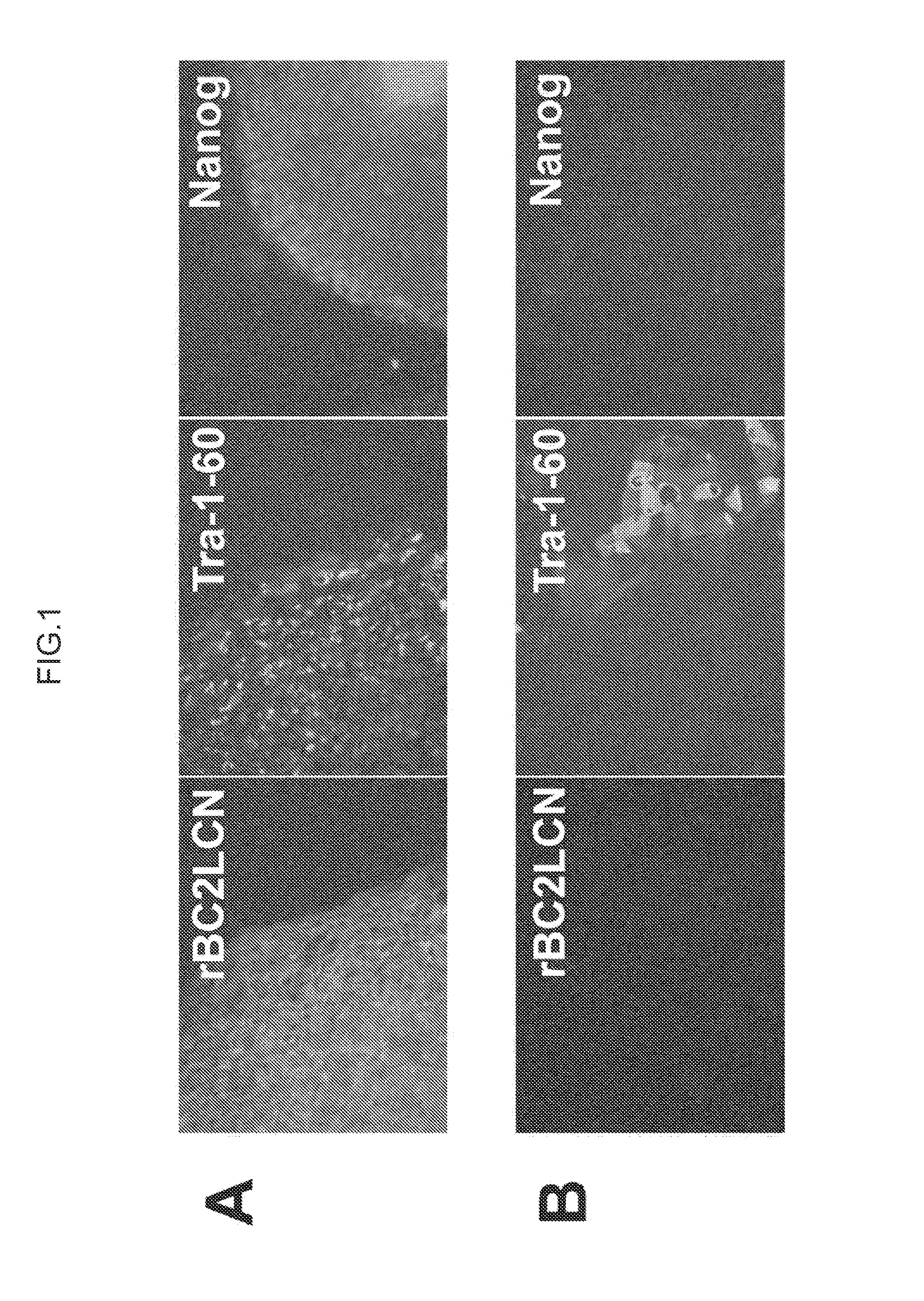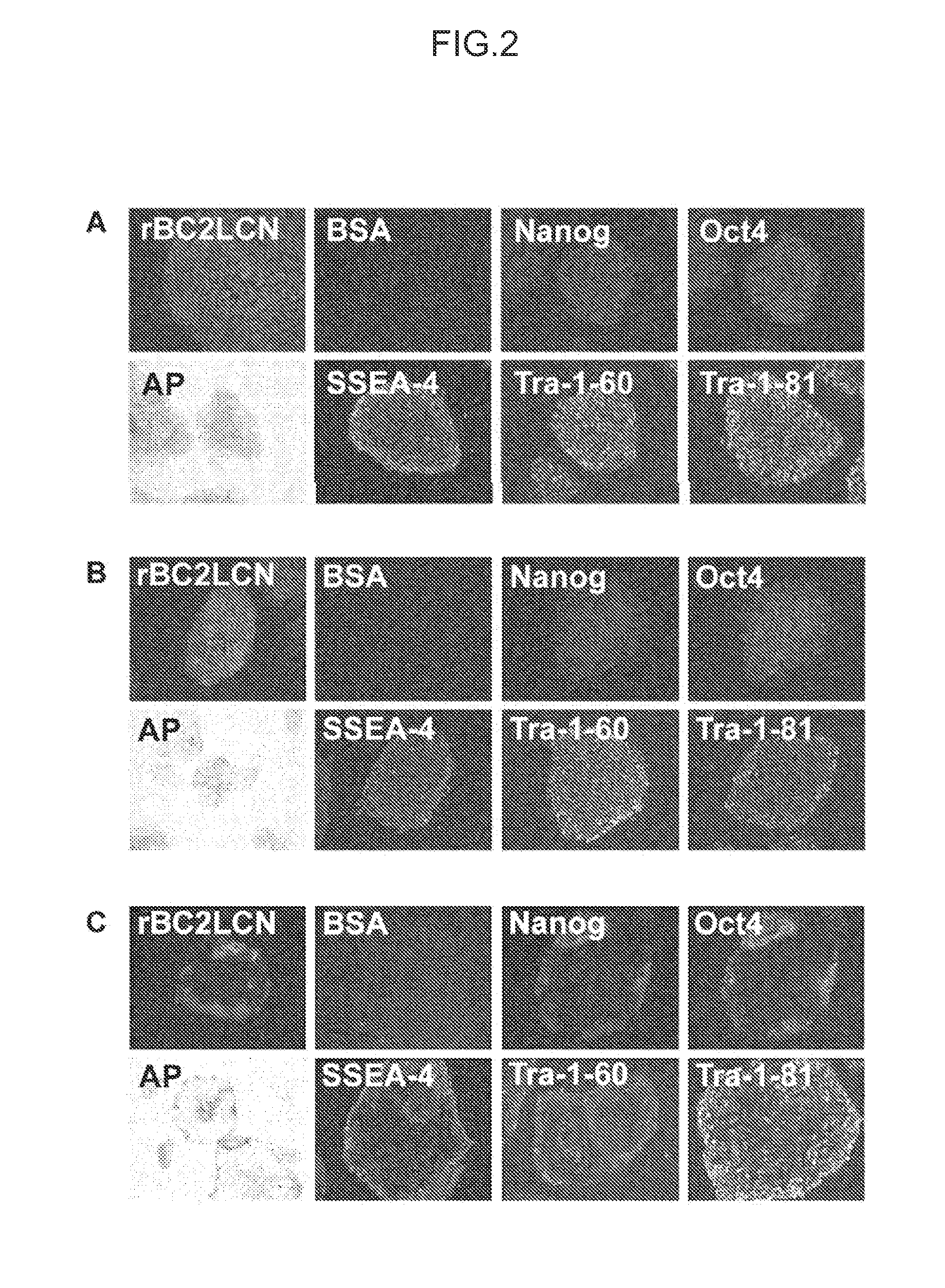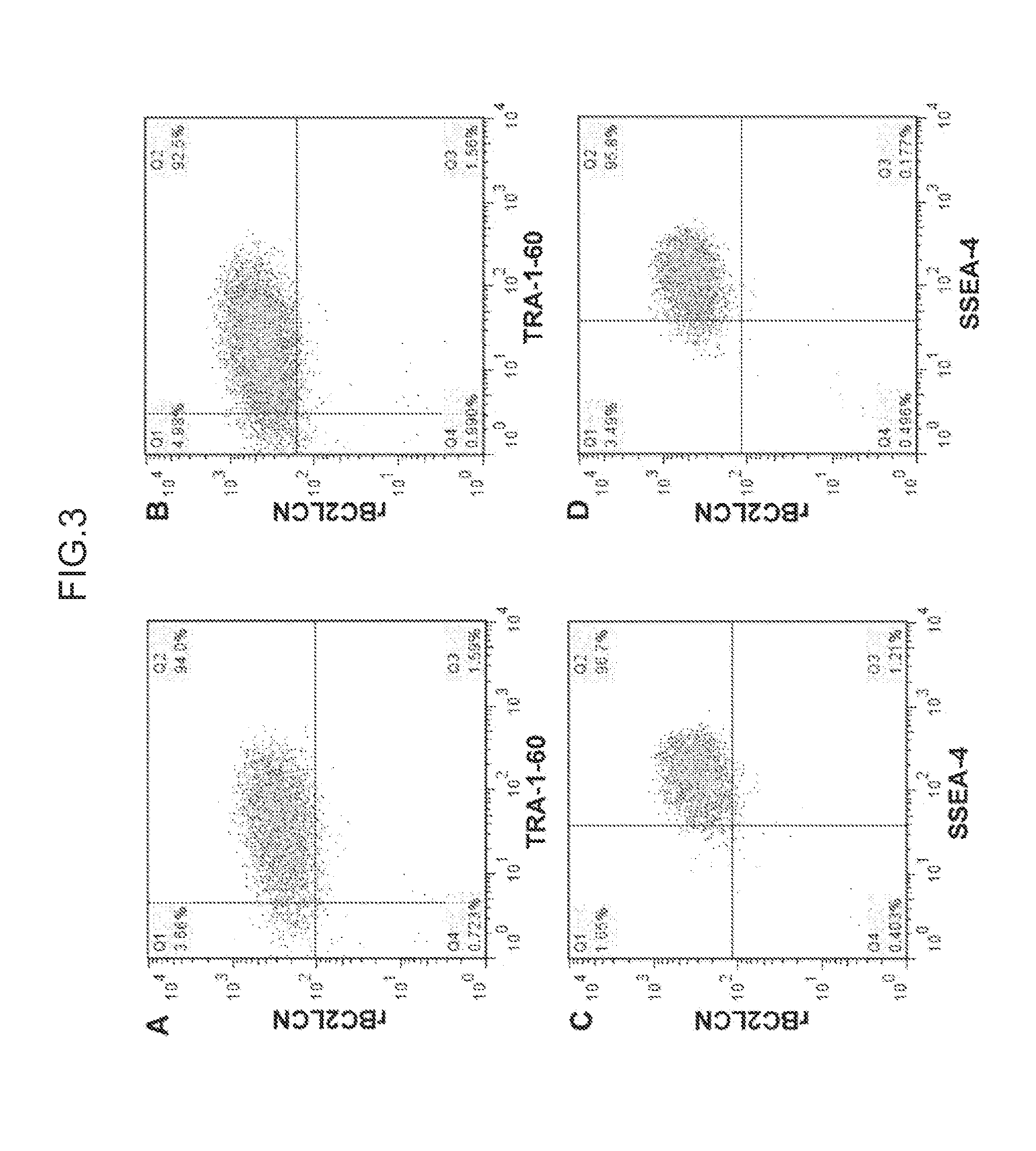Cell differentiation assay method, cell isolation method, method for producing induced pluripotent stem cells, and method for producing differentiated cells
- Summary
- Abstract
- Description
- Claims
- Application Information
AI Technical Summary
Benefits of technology
Problems solved by technology
Method used
Image
Examples
example 1
Cell Staining of Human ES Cell
[0146]Human ES cells (KhES-1 strain) used in this Example were obtained from Institute for Frontier Medical Sciences, Kyoto University. These cells were cultured by the method of Suemori et al. (see Non Patent Literature 6). ES cell colonies were fixed with 4% paraformaldehyde and washed with PBS, to which rBC2LCN lectin fluorescently labeled (bound to Cy3) was then added for reaction at room temperature for 1 hour (A in FIG. 1). As a target for comparison, the stained image of the ES cell colonies is shown which was reacted with Tra-1-60 antibody or anti-Nanog antibody specifically recognizing undifferentiated ES cells or iPS cells and then further reacted with anti-mouse IgM-Alexa 488 or anti-rabbit IgG-Alexa 594 as a secondary antibody (A in FIG. 1). The fluorescence-labeled rBC2LCN lectin strongly stained the ES cells as did Tra-1-60 antibody or anti-Nanog antibody. Because the above experiment was performed without crushing cells, it is noted that ...
example 2
[0149]iPS cells (253G1 strain) used in this Example were obtained from the Riken BioResource Center. Cells were cultured by the method of Tateno et al. (see Non Patent Literature 1). Cells were fixed with 4% paraformaldehyde and washed with PBS, to which rBC2LCN lectin fluorescently labeled (bound to Cy3) was then added for reaction at room temperature for 1 hour (FIG. 2). Fluorescence-labeled BSA was used as a negative control (FIG. 2). As a target for comparison, staining with alkaline phosphatase as a marker for undifferentiated ES cells or iPS cells or staining with an antibody (anti-Nanog antibody, anti-Oct3 / 4 antibody, SSEA-4 antibody, Tra-1-60 antibody, or Tra-1-81 antibody) was performed (FIG. 2). It was shown that fluorescence-labeled BC2LCN lectin strongly stained undifferentiated iPS cells and strongly detected iPS cells to the same extent as or more extent than staining with AP as a known undifferentiation marker and various antibody staining (A...
example 3
Flow Cytometry of iPS Cell Using Fluorescence-Labeled BC2LCN Lectin
[0152]iPS cells (253G1 strain) prepared in the same way as in Example 2 were dissociated by enzyme treatment, reacted with fluorescence-labeled (HiLyte Fluor 647-bound) rBC2LCN lectin and a known undifferentiation detection antibody (Tra-1-60 antibody or SSEA-4 antibody), and subjected to flow cytometry analysis using a FACS apparatus (FIG. 3).
[0153]As a result, 92.5 to 94.0% of all cells simultaneously bound to Tra-1-60 antibody and rBC2LCN lectin (A and B in FIG. 3). In addition, 95.8 to 96.7% of all cells simultaneously bound to SSEA-4 antibody and rBC2LCN lectin (C and D in FIG. 3). These results demonstrate that BC2LCN lectin can effectively sort iPS cells maintaining undifferentiation.
[0154]No difference was observed in the percentage of cells simultaneously binding to rBC2LCN and Tra-1-60 antibody or SSEA-4 antibody between a case where cells were reacted first with rBC2LCN lectin and later with Tra-1-60 antib...
PUM
 Login to View More
Login to View More Abstract
Description
Claims
Application Information
 Login to View More
Login to View More - R&D
- Intellectual Property
- Life Sciences
- Materials
- Tech Scout
- Unparalleled Data Quality
- Higher Quality Content
- 60% Fewer Hallucinations
Browse by: Latest US Patents, China's latest patents, Technical Efficacy Thesaurus, Application Domain, Technology Topic, Popular Technical Reports.
© 2025 PatSnap. All rights reserved.Legal|Privacy policy|Modern Slavery Act Transparency Statement|Sitemap|About US| Contact US: help@patsnap.com



